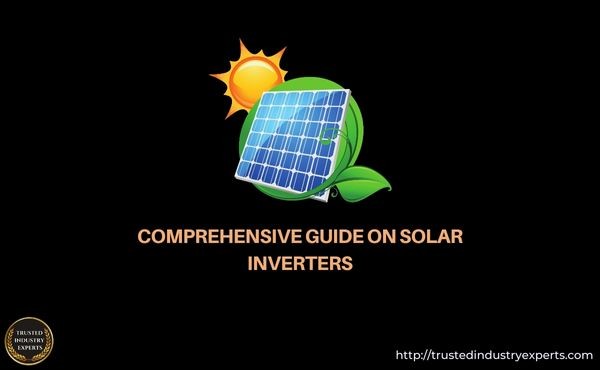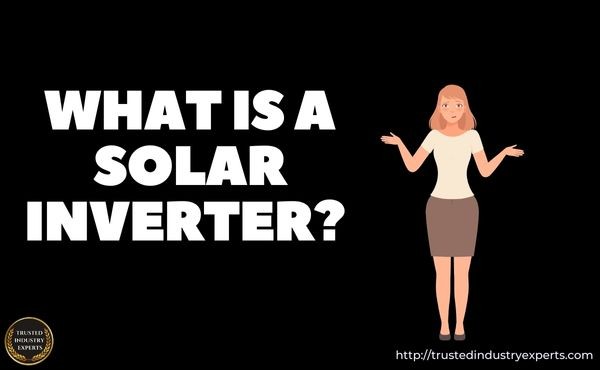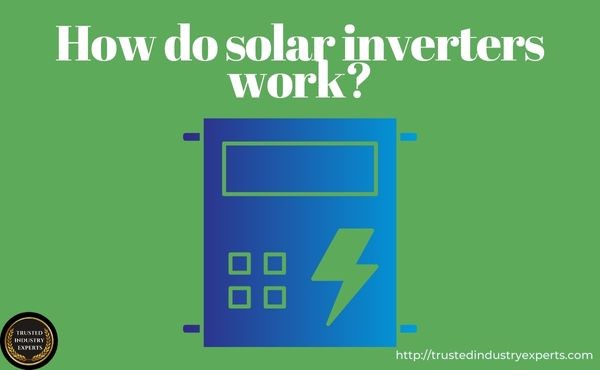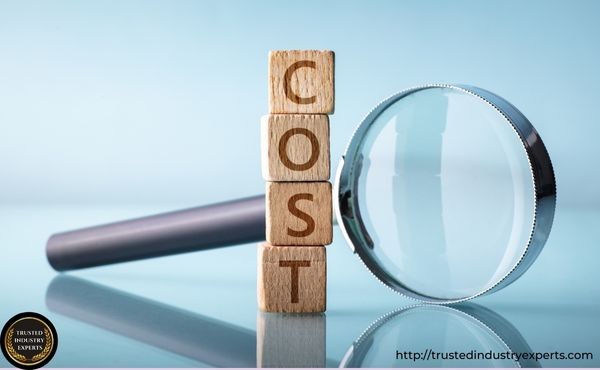
Comprehensive Guide on Solar Inverters
Welcome to our comprehensive guide on solar inverters. If you’re considering solar panels for your home or business, you may have heard about solar inverters. In this guide, we will discuss what solar inverters are, how they work, and the different types available on the market. We will also provide a comparison between the top-rated solar inverters to help you make an informed decision.
What are solar inverters?
Solar inverters are a critical component of any solar power system. They convert the direct current (DC) electricity generated by solar panels into alternating current (AC) electricity, which is suitable for use in your home or business. Without an inverter, the DC electricity generated by solar panels would be unusable.
Sun-Powered Solutions: All About Solar Inverters
You’ve heard of solar energy, but what do you really know about the power behind it? If you want to make the most of your solar energy system, it’s essential to understand how a solar inverter works. Let’s dive into what these versatile machines are and why they’re such a critical component of any solar power system.
What is a Solar Inverter?

A solar inverter is an electronic device that converts direct current (DC) electricity generated by solar panels into alternating current (AC) electricity. This AC electricity is more suitable for use in your home or business, as it is compatible with the power grid and all standard appliances.
Without an inverter, the DC electricity generated by your solar panels would be unusable. Just like a transformer turns down high voltage from the utility grid to low voltage for your home, so too does a solar inverter convert DC power from your panels to AC power that can be used by everyday appliances.
Types of Solar Inverters
There are several types of solar inverters designed for specific purposes, including string inverters, microinverters, and hybrid inverters. String inverters are the most common type and are used in large-scale systems where multiple panels are connected in series (or “strings”).
Microinverters work independently on each panel in order to maximize efficiency when shading or angle issues arise; they also allow for independent maintenance if one panel fails without interrupting performance overall.
And hybrid inverters combine the functions of both a string and microinverter while adding battery storage capacity if desired. No matter which type you choose, it’s important to select an efficient model with good warranties and technical support as well as one that is compliant with local regulations regarding energy production. Be sure to thoroughly research all available options before making an investment!
Solar energy systems
Solar energy systems provide clean energy solutions for homes across the globe, but none of them could function without their trusty sidekick—the solar inverter!
By understanding what these devices do and selecting an appropriate type for your needs, you can ensure optimal performance from your system over time.
Whether you need a single-panel solution or something more complex with battery storage capabilities, there’s sure to be a perfect match among today’s wide selection of reliable yet affordable inverters! So don’t wait—get out there and start shopping around today!
How do solar inverters work?
Solar inverters work by converting the DC electricity produced by solar panels into AC electricity. This process is called inversion. The AC electricity is then fed into your home or business’s electrical system, where it can be used to power your appliances.

What you Need to Know About Solar Inverters
Have you ever wondered how solar energy is produced and used in homes and businesses? Solar inverters are an important part of the process. In this blog post, we will explore what solar inverters do and why they’re so important for solar energy production.
In order to understand what a solar inverter does, it is first important to understand how solar systems work.
Solar panels produce direct current (DC) electricity, which needs to be converted into alternating current (AC) electricity before it can be used in your home or business.
This conversion process is called inversion, and it is done by a device called a solar inverter.
Cost of a solar inverter
The cost of a solar inverter depends on the type of system you have installed, as well as the size of the system and the number of components that are included.

Generally speaking, string inverters are less expensive than micro-inverters or power optimizers because they only need one device per installation rather than several smaller ones.
However, string inverters may not be able to handle larger systems with multiple panels due to their limited power output capabilities.
On the other hand, micro-inverters and power optimizers cost more upfront but can provide greater flexibility when dealing with multiple installations or large systems since each panel has its own dedicated device that can monitor system output separately from the rest of the array.
Pure sine wave or modified sine wave inverters are optimal for sensitive devices like medical equipment and computers. These inverters generate cleaner AC energy than central inverter designs. As a result, medical professionals and computer users rely on them to prevent damage and malfunction.
Finally, if you live off-grid or experience frequent power outages, an off-grid inverter may be necessary in order to ensure that your solar system is still able to provide electricity even when external power lines are unavailable.
Monitoring system
Solar energy systems require a reliable monitoring system in order to ensure that they are producing enough energy and running properly.
The good news is that many modern solar systems come equipped with built-in monitoring systems that allow users to keep track of their system’s performance remotely via a smartphone app or web portal.
These monitoring systems also enable users to see how much energy their panels are producing in real time as well as allowing them to adjust settings such as panel angles if needed for optimal performance.
This level of control allows users not only peace of mind but also helps save money on energy costs by ensuring maximum efficiency from their systems over time.
Solar inverters play an essential role in converting DC electricity produced by solar panels into AC electricity which can then be used in homes and businesses around the world.
AC inverters can be found in different sizes and types based on specific requirements and budget. Their primary function is to convert DC to AC, ensuring safe usage of electrical systems. They safeguard against voltage waves beyond normal parameters. In addition, they prevent damage and disruption. AC inverters are a crucial component of every electrical system. They allow for smooth and seamless power usage, even during times of unexpected power spikes. Without them, electrical appliances would be at risk of damaging voltage waves. AC inverters are the unsung heroes of our modern electronic devices.
Users have full control over their solar system and are aware of the energy generated by the panels. Furthermore, this knowledge helps them reduce their utility expenses and shield against grid failures and harsh weather. Additionally, modern monitoring systems facilitate controlling performance and provide peace of mind. As a result, users benefit from increased savings and uninterrupted power supply.
Types of Solar Inverters
There are three main types of solar inverters: string inverters, microinverters, and power optimizers. Each type has its own unique advantages and disadvantages.
String Inverters
String inverters are the go-to inverter for solar power systems. They can handle output from multiple panels wired together in a series, called a string. These inverters work efficiently to convert DC power into AC power, ensuring an uninterrupted supply of electricity. They are reliable, durable, and widely used in the solar industry. The string inverter’s high efficiency and power output make it a favorite among solar installers and homeowners alike. String inverters are efficient, cost-effective, and reliable.
However, if one panel in the string is shaded or underperforming, it can affect the output of the entire string.
How String Inverters Can Power Your Home Solar System
When it comes to powering your home with solar energy, string inverters are the go-to option. These inverters are designed to take the output of multiple solar panels wired together in a series (known as a “string”) and convert the DC electricity into AC power that your home can use.
String inverters are efficient, cost-effective, and reliable—but there are some drawbacks you should be aware of before installing them on your home solar system.
The Pros and Cons of String Inverters
For most homeowners looking to install solar systems on their properties, string inverters are a great solution because they are often less expensive than other types of inverters. Additionally, they offer higher efficiency rates than microinverters and require less maintenance over time.
When a solar panel in a string is shaded or covered in debris, it affects the performance of the whole string. The shading effect lowers the maximum power generated by the system, reducing its efficiency. This underscores the importance of keeping solar panels clean and free from obstructions.
That said, there are several ways to combat this issue when using string inverters in your home solar system. For example, using high-efficiency monocrystalline or polycrystalline solar cells can help minimize losses due to shading because these materials allow more light through than standard crystalline silicon cells do.
Firstly, to optimize power generation, position solar panels evenly with proper orientation and tilt. Secondly, pairing a string inverter with an off-grid system provides automatic battery and grid connection switching. This offers protection during power outages and ensures maximum energy availability.
Microinverters
Microinverters are small inverters that are attached to each solar panel. Each panel operates independently, thus the performance of one does not impact the others. Microinverters are more expensive than string inverters, but they offer better performance, especially in partially shaded areas.
Microinverters offer a great amount of electrical customization when it comes to solar panel energy production. Moreover, each solar panel inverter functions independently, unaffected by the performance of other panels, rendering them optimal. Despite partial shading, the array can still achieve maximum efficiency and output through advanced technology. In addition, microinverters are beneficial because they feed pure sine wave electricity into the electrical grid, unlike central inverters—which feed modified electrical signals with lots of harmonic distortion.
Additionally, they offer an advantage in comparison to batteries, which store electrical energy as opposed to converting it right away. Microinverters promptly send converted electrical energy to electrical grids, instead of storing it in a battery bank. Despite higher upfront costs, they enhance performance, optimize power controls, and offer a great return on investment.
Power Optimizers
Power optimizers are similar to microinverters, but they are not full inverters. They are installed at each solar panel and work with a central string inverter. Power optimizers allow each panel to operate at its optimal level, which can improve the overall system’s performance.
These Power optimizers are an increasingly popular system for maximizing system output from solar installations. Power optimizers work with a central inverter to convert solar energy into usable power. They enable each panel to operate at its optimal output. Unlike microinverters, they use the same main inverter to coordinate operations and maximize efficiency.
To enhance system performance and overcome shade issues, power optimizers are helpful. Panels can be redirected to reduce energy losses without the need for an inverter. Power optimizers can help improve system output and guarantee each solar panel operates efficiently.
Top-rated Solar Inverters
When choosing a solar inverter, it’s essential to choose one that is reliable, efficient, and compatible with your solar panels. Here are some of the top-rated solar inverters on the market today:
SolarEdge
SolarEdge is a leading manufacturer of power optimizers and string inverters. As a result of their ability to function alongside various solar panel brands, their inverters boast an exceptional 99% conversion rate.
Enphase
Enphase is a leading manufacturer of microinverters. Offering superior performance even in partially shaded areas, our microinverters are versatile and compatible with various solar panel brands.
SMA
SMA is a German company that produces a range of string inverters. Their inverters are known for their reliability, efficiency, and compatibility with a range of solar panels.
In conclusion, solar inverters are a vital component of any solar power system. They convert the DC electricity generated by solar panels into AC electricity, which can be used in your home or business. There are three main types of solar inverters: string inverters, microinverters, and power optimizers. When choosing a solar inverter, it’s essential



